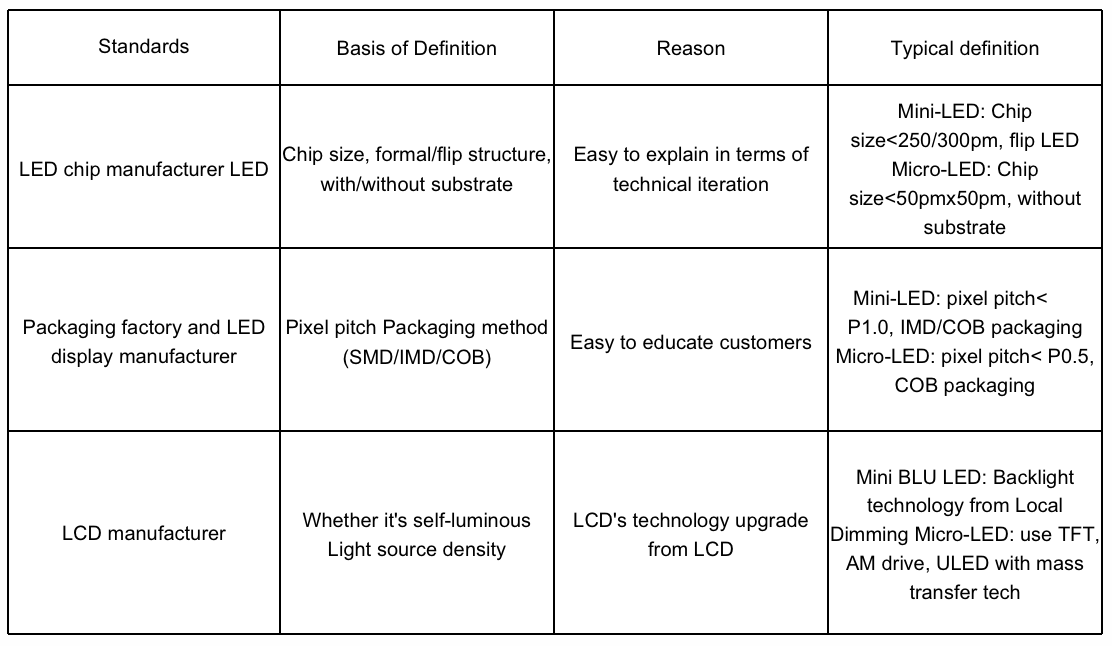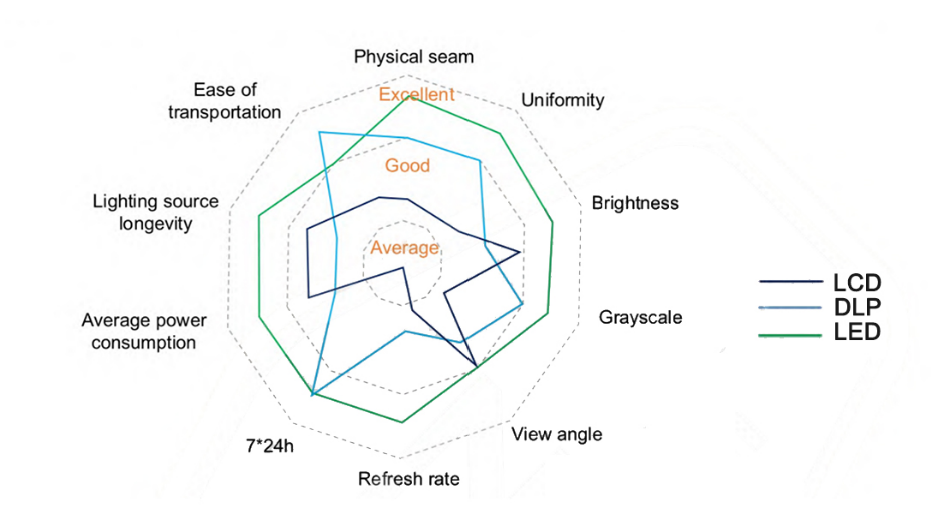What is Mini LED and Micro LED led display?
The Micro-LED concept was first put forward in 2000. In 2017, Mini-LED, as a subordinate form of Micro-LED, was introduced as a groundbreaking product, officially opening a new chapter of Mini and Micro-LED.
Definitions of Mini/Micro-LED vary in the industry. On one hand, upstream suppliers and LCD display manufacturers tend to define Mini-LED and Micro-LED by chip size, formal or flip structure, and film transfer (substrate-less structure). On the other hand, large-format display manufacturers are more inclined to define Mini-LED and Micro-LED by pixel pitch and packaging method.

I1.In terms of pixel pitch. products at or below 2.5mm are defined as fine-pitch, which serves as an umbrella term. Within the fine-pitch range, Mini-LED is defined as products with pixel pitch ranging from 0.4mm to 1mm, whereas Micro-LED is defined as products with pixel pitch below 0.4mm.
LED displays have been used in commercial applications for more than a decade. IMD extends the service life of the SMD supply chain and serves as a smooth transition from SMD to finer-pitch products. COB’s growth paves the way for Mini- and Micro-LED products in the future.
3.In terms of Chip Size. Mini LEDs tend to measure below 200 microns , while micro LEDs can be as small as 100 microns, or 0.004 inches.
Market competition brought by Mini & Micro-LED
With LED displays evolving to the fine-pitch level, viewing distance is also greatly reduced, which broadens the applications for fine-pitch LED displays. Indoor LED displays start at 4mm, and fine-pitch products start from 2.5mm. Further finer pitch in the sub-1 mm range will bring LED displays to the consumer market and ultimately compete against LCD and laser projections in the TV market.
Take the 108-inch LED display as an example (600*337.5mm LED panels in 4×4 panel array). When the pixel pitch is P1.25, P0.62, and P0.31, the resolution can be 2K, 4K, and 8K respectively. According to the Rec. ITU-R BT.1769 reference standard of ITU (International Telecommunication Union), the optimal horizontal viewing angle under this resolution is 32°, 58°and 96°respectively, from which the optimal viewing distances are estimated to be 4.17m,2.02m and 1.01m respectively. The above viewing distance makes it possible for LED displays to be used in living rooms as a TV. The viewing distance of 2.02m and 1.01m is suitable for the living room area of most houses. From another perspective, if we convert the resolution of 2K and 4K LCD TVs into pixel pitches of 53” LED displays, we can find that 2K LCD TV’s pixel pitch is between 0.6mm and 1.2mm, and 4K LED TV’s pixel pitch is between 0.3mm and 0.5mm. Up to now, SONY, Samsung, and other display manufacturers have launched large-size Mini/Micro-LED display products up to 120 inches based on a modular design. If we ignore their sky-high price, these products are perfect for living room applications.




Hello.This article was really fascinating, especially because I was looking for thoughts on this topic last week.